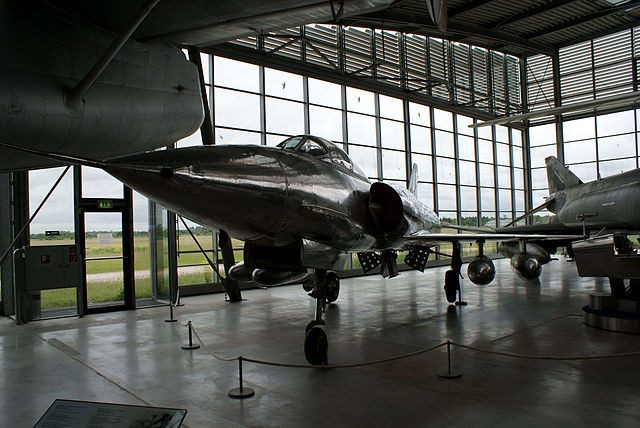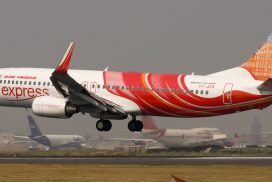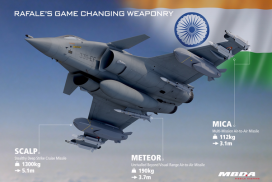Back in April 1st, 1967, HAL conceived India’s the Marut HF-24, the first domestically built fighter jet plane and delivered it to the Indian Air Force. As far as aviation in India is concerned, this was the conclusive realization of a dream envisioned in India to achieve independence in the fields of design and production of aircraft.
So that would mean, that the HAL Tejas light-weight fighter inducted into Indian Air Force on July 1st, 2016, is not India’s first indigenous fighter to be sanctioned into the Indian Air Force. The government encouraged the development of the HF-24 Marut, but due to its engine issues soon the aircraft reached an untimely phasing out. The aircraft proved to be so ahead of its time that one pristine example is still displayed in Germany’s Deutsches Museum Flugwerft Schleissheim near Munich. In India however, it remains largely forgotten.
The HF-24 was a quite a significant achievement for independent India in the ’50s and ’60s. It was an endeavor of a budding nation full of fervor for building the growing economy, under the national aim of creating manufacturing and design capabilities for aviation. At the time of the HF-24s conception, the domestic aviation industry’s only experience was limited to designing and manufacturing propeller driven power-plants driven by pistons.
The only aircraft design and manufacturing capability was with Hindustan Aircraft Limited which was set up in the 30s and nationalized by the Government thereafter. The building of the Marut ( which meant “Spirit of the Tempest” in Sanskrit) was the first attempt of its kind, outside the four major powers of America, Russia, United Kingdom and France to build a supersonic jet fighter.
The HF-24 was conceived to meet a certain list of specifications that a super-sonic, muti-role aircraft should achieve. It was designed to be suitable for both high-altitude and low-level ground attack. The specified performance characteristics called for a speed of ‘Mach 2’ at an altitude of 60,000 feet with a combat radius of 500 miles. Furthermore, the aircraft were to have a preliminary design suitable for adaptation as an advanced trainer aircraft, an all-weather fighter and for incorporation into the navy as a ship-landing aircraft.
Nehru reached out to the top aeronautical designers from the West to work for India on this project. It was to Dr Kurt Tank of Focke-Wulf fame, who took up the assignment along with his deputy Engineer Mittelhuber, in August 1956 at HAL Bangalore. Assembly of the first prototype design began in April 1960 and after a thorough three month test program, flew for the first time on June 17th, 1961.
On 4th October 1962, a second concept designed prototype joined the flight development program and the two prototypes were extensively tested a team of Air Force test pilots for aerodynamics, engine performance, arms, avionics, instrumentation, stability, and emergency protocols. The design of the HF-24 had been based around the 3700 Kgf after-burning Bristol Siddeley Orpheus engine. However, the British decided to discontinue production for the powerplant and the design team was forced to adopt the non-afterburner 2200 Kgf Orpheus 703 as an intermediate solution. This engine turned out to have inadequate power for the Marut.
The lack of an appropriate power plant meant that Marut could not fulfil its role as an intercepting, super-sonic jet though the scope of being a ground attack fighter / bomber was very likely. The Marut’s wings were very thin and large, highly swept, and retained a well-balanced compromise of adequate sweep to fly at supersonic speeds and was capable of maintaining moderate landing speeds and low altitude stability. Its maximum performance was 1112 kph (Mach 0.91) at sea level and 1086 kph (Mach 1.02) at high altitudes.
In terms of armament, it could accommodate four 30 mm cannons with 130 rounds per gun with a comprehensive rate of fire at 2400 rounds / minute. It had 4 under-wing structures rated for 1000 lbs each. Typical loads armed were bombs of 1000 lbs, 500 lbs and 250 lbs, 68 mm rocket packs of 18 / 36 rockets per pack alongside napalm bombs. It also could carry 50 French 68mm ground attack rockets in internal holdings that were placed behind the pilot. Typical warheads equipped were high explosive, fragmentation & anti-tank missiles making it a formidable fighter.
The Marut served on in the IAF through the 1970s. The IAF was not interested in HAL developing the Marut further. The Marut never realised its full potential due to insufficient power. The design and power-plants were outdated and there were much more sophisticated machinery in the skies. It was finally succeeded by the Sepecat Jaguar and the Mig-23BN followed by the Mig-27M.
In 1984, the Indian government chose to establish the Aeronautical Development Agency of which the 2016 – Tejas is often described as a product of. In terms of aerodynamics , the Tejas is a superior design and with the adoption of the GE-F404 after-burning turbofan engine, it also have something to power this aircraft well into the future.




